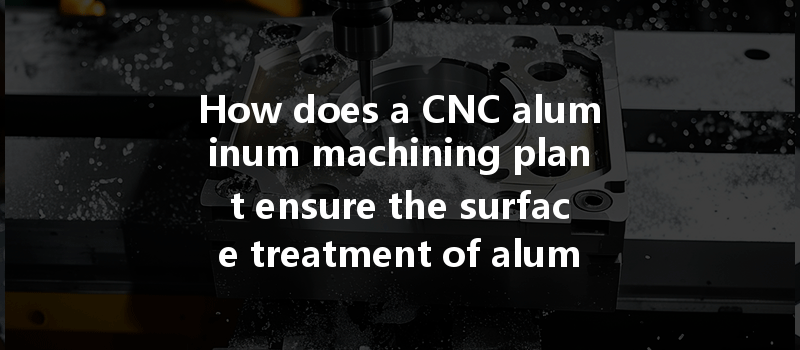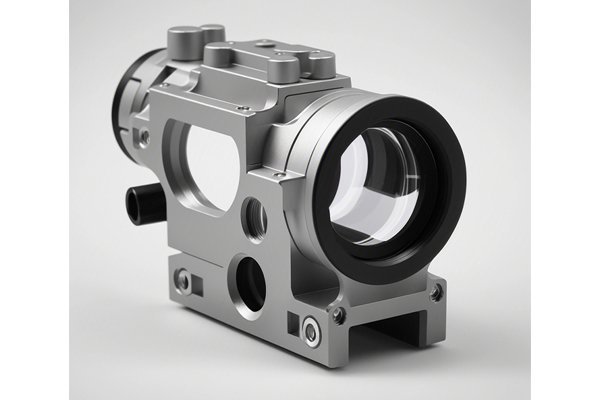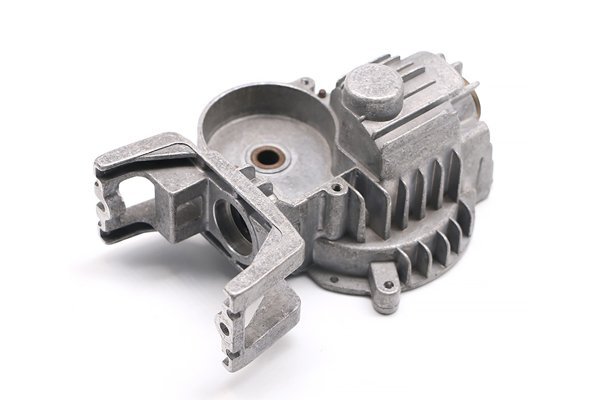Have you ever wondered why some aluminum parts shine brightly and resist corrosion while others seem to dull and tarnish? The answer lies in meticulous surface treatment processes that play a pivotal role in identifying the performance, durability, and aesthetic appeal of CNC-machined aluminum components. In fact, according to a report by the Aluminum Association, surface treatments can improve the lifespan of aluminum parts by about 45% or more, depending on the application.
With burgeoning industrial demands and diverse applications ranging from aerospace components to intricate consumer goods, the role of surface treatments in CNC (Computer Numerical Control) aluminum machining is more critical than ever. This blog explores the ins and outs of how a CNC aluminum machining plant ensures that its surface treatments meet rigorous industry requirements, delving into various techniques, processes, and quality control measures.
Understanding the Importance of Surface Treatment
Before we dive into how surface treatment is optimized within machining facilities, it’s essential to grasp its significance. Surface treatments serve various functions, including:
Understanding these benefits helps CNC machining plants prioritize surface treatments in their manufacturing processes.
Main Surface Treatment Techniques for Aluminum Parts
To ensure that surface treatment meets industry requirements, CNC aluminum machining plants use a range of well-established techniques. Here, we break down the most notable methods:
Anodizing is an electrochemical process that converts the aluminum surface into a decorative, durable, corrosion-resistant anodic oxide finish. The process involves submerging the aluminum part in an electrolytic solution and applying an electrical current, which promotes oxide growth.
Benefits of Anodizing:
Quality Considerations:
Powder coating is a dry finishing process where finely ground particles of pigment and resin are electrically charged and sprayed onto the part. The coated item is then cured under heat, allowing the powder particles to fuse and form a tough, protective layer.
Benefits of Powder Coating:
Quality Considerations:
Electroplating involves depositing a layer of metal on the aluminum surface using electrochemical processes. Nickel and chrome are common plating materials that can improve corrosion resistance and enhance aesthetics.
Benefits of Electroplating:
Quality Considerations:
Also known as chromate conversion coating, this process adds a thin layer of chromate to aluminum, providing corrosion resistance and enhancing paint adhesion. This coating is often used in the aerospace industry due to its lightweight nature.
Benefits of Chemical Film Coating:
Quality Considerations:

Polishing is a mechanical method that involves smoothing the surface of the aluminum part to achieve a shiny finish. It’s commonly used for aesthetic products where appearance is crucial.
Benefits of Polishing:
Quality Considerations:
Quality Control Procedures for Surface Treatment
To ensure that surface treatments meet industry standards, CNC aluminum machining plants establish comprehensive quality control procedures at every stage of the manufacturing process:
Before surface treatment begins, a detailed inspection is conducted to assess the quality of the raw aluminum parts. Factors such as surface roughness, existing contaminants, and dimensional tolerances are evaluated to ensure optimal results once treatment is applied.
During anodizing, powder coating, or other treatment processes, real-time monitoring systems track parameters such as temperature, voltage, and immersion time. Any deviations from predetermined recipes can be quickly corrected to maintain product quality.
After surface treatment, various tests are employed to confirm that treated components meet required specifications. These tests could include:
Comprehensive records are maintained throughout the entire machining and surface treatment process. This documentation includes process parameters, test results, and inspection notes, allowing for traceability and accountability within the manufacturing process.
Industry Standards and Regulations
CNC aluminum machining plants are often required to adhere to various industry standards and regulations. Organizations such as the International Organization for Standardization (ISO) provide guidelines for quality management systems, including those specific to surface treatments.
ISO Certifications
Securing relevant ISO certifications (e.g., ISO 9001 for quality management systems) can help machining plants assure customers of their commitment to producing high-quality products. Adherence to these standards can also improve operational efficiency and enhance customer satisfaction.
Compliance with Environmental Regulations
Surface treatments can involve the use of hazardous materials or generate waste. Machining plants must remain compliant with environmental regulations, such as the Resource Conservation and Recovery Act (RCRA) in the United States, to minimize their ecological footprint while maintaining product quality.
Innovations in Surface Treatment Technology
The CNC aluminum machining industry is constantly evolving, with advances in technology leading to more efficient, effective, and environmentally friendly surface treatments. Some notable innovations include:
Nanotechnology has enabled the development of coatings that enhance surface properties on a molecular level. Nanocoatings can provide exceptional resistance to wear, corrosion, and bacterial growth while maintaining lightweight characteristics.
The growing emphasis on sustainability is driving the development of eco-friendly surface treatment solutions. Many machining plants are exploring water-based coatings, biodegradable cleaning agents, and other sustainable practices to reduce waste and environmental impacts.
Automation in quality control has become increasingly prevalent in CNC machining facilities. Systems equipped with AI technology can analyze data from production lines to identify potential defects proactively, leading to continuous improvements in surface treatment processes.
In the competitive landscape of CNC machining, the quality of aluminum surface treatment is paramount. With the ability to significantly influence the durability, performance, and aesthetic appeal of machined parts, CNC aluminum machining plants must prioritize effective practices and rigorous quality control measures.
By understanding the various surface treatment techniques, implementing robust quality management systems, remaining compliant with industry standards and regulations, and leveraging technological innovations, manufacturers can ensure their aluminum parts meet and exceed the highest industry requirements.
Why This Blog Matters
Understanding how surface treatment impacts CNC aluminum machining not only equips manufacturers with the knowledge to optimize their processes but also empowers customers to make informed decisions when selecting components for their applications. As the industry continues to evolve, embracing advancements in surface treatment technology will be critical for maintaining competitiveness and delivering high-quality products.
In conclusion, the next time you encounter a CNC machined aluminum part, consider the intricate processes and technologies behind its surface treatment. It’s a testament to human innovation, driven by the desire to create reliable and aesthetically pleasing products. By remaining aware of these practices, businesses and consumers alike can contribute to the ongoing pursuit of quality and excellence in manufacturing.






